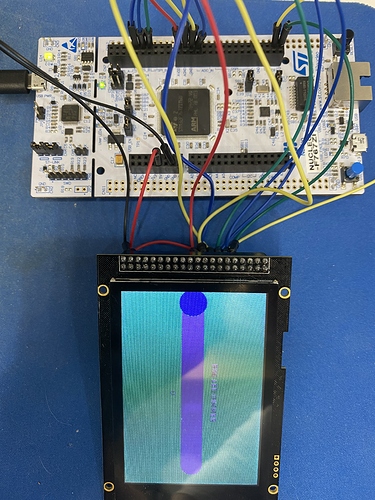I discovered what my problem was. My display has a backlight pin and requires it driven high. When copy and pasting the example code I simply forgot to add the two lines of code needed to drive that pin high like I added in the TFT_eSPI example code.
So now my screen is displaying the lvgl slider example. But, the colors are all off and I’m assuming its because of the fact that I’m using an ILI9488 which is 24 bit color not 16. The other problem I’m going to face is that the TFT_eSPI library does not support DMA on IL9488.
Is there an easy way to have lvgl convert the 16 bit colors to 24 before pushing them to the display? Maybe in the my_disp_flush func?
This has lead me to a few more questions, which I’ve asked in this thread:
